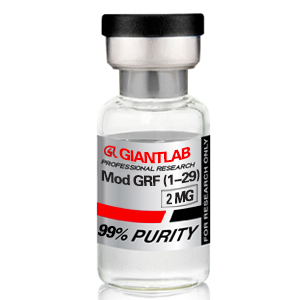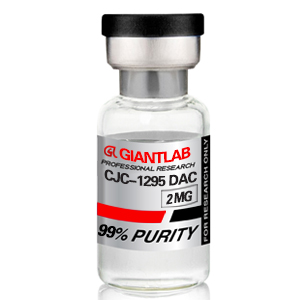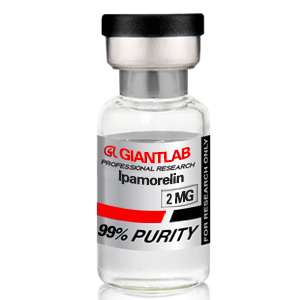Mod grf 1-29 Development:
Modified GRF (1-29) often abbreviated as mod GRF (1-29). Mod-GRF 1-29 is a synthetically made version of growth hormone releasing hormone (GHRH), the chemical in the body responsible for stimulating natural growth hormone production. Sometimes referred to as CJC-1295 without DAC (CJC-1295 w/o dac), it is categorized as a growth hormone secretagogue, a compound which stimulates increased secretion of growth hormone from the pituitary gland. Although similar to Sermorelin, Mod-GRF has four amino acid substitutions made to its chemical structure, hence the alternate name “tetrasubstituted” GRF 1-29. These changes effectively increase the stability of Mod GRF during storage, transportation, and administration while enhancing its affinity for the GHRH receptor. Many scientists have said that the half life of Modified GRF 1-29 and Sermorelin is considered to be way more natural as they are said to produce a short pulse of Human Growth Hormone.

In 2005, the first specific mention of tetrasubstitued GRF (1-29) appeared in a study that used it as one of the GRF (1-29) analogue peptide structures studied.[5] The term was used to describe the replacement of the 2nd, 8th, 15th, and 27th amino acids in the structure of GRF (1-29).
In 2008, a researcher known as DatBtrue created the term modified GRF (1-29) in place of tetrasubstitued GRF (1-29) in his public articles. Continued use of the term on public and private forums has popularized and standardized the nomenclature.
The first 29 amino acids of GHRH were discovered to be as equally potent as its full 44 amino acid structure. This fragment became known as GRF (1-29). However, due to a rapid metabolic clearance analogues of GRF (1-29) were synthesized to enhance the biological activity and reduce the rapidity of metabolic clearance. These analogues were primarily created by substituting amino acids within the peptide structure for amino acids more resistant to enzymatic cleavage. One early analogue substituted the amino acid L-alanine (abbreviated as Ala or A) at the 2nd position of the peptide structure for its optical isomer (mirror image), D-alanine (abbreviated as D-Ala). This substitution resulted in a peptide bond between D-Ala and the 3rd amino acid in the structure aspartic acid (Asp) more able to resist rapid cleavage by the enzyme dipeptidyl peptidase-4, a cleavage which had previously led to an inactive peptide fragment. This successful modification prompted the further creation of analogues with additional amino acid substitutions.

Ipamorelin Peptide:
The development and pharmacology of a new potent growth hormone (GH) secretagogue, ipamorelin, is described. Ipamorelin is a pentapeptide (Aib-His-D-2-Nal-D-Phe-Lys-NH2), which displays high GH releasing potency and efficacy in vitro and in vivo. As an outcome of a major chemistry programme, ipamorelin was identified within a series of compounds lacking the central dipeptide Ala-Trp of growth hormone-releasing peptide (GHRP)-1. A pharmacological profiling using GHRP and growth hormone-releasing hormone (GHRH) antagonists clearly demonstrated that ipamorelin, like GHRP-6, stimulates GH release via a GHRP-like receptor. In pentobarbital anaesthetised rats, ipamorelin released GH with a potency and efficacy comparable to GHRP-6. GHRP-2 displayed higher potency but lower efficacy. The specificity for GH release was studied in swine. None of the GH secretagogues tested affected FSH, LH, PRL or TSH plasma levels. Administration of both GHRP-6 and GHRP-2 resulted in increased plasma levels of ACTH and cortisol. Very surprisingly, ipamorelin did not release ACTH or cortisol in levels significantly different from those observed following GHRH stimulation. This lack of effect on ACTH and cortisol plasma levels was evident even at doses more than 200-fold higher than the ED50 for GH release. In conclusion, ipamorelin is the first GHRP-receptor agonist with a selectivity for GH release similar to that displayed by GHRH. The specificity of ipamorelin makes this compound a very interesting candidate for future clinical development.

Mod grf 1-29 and Ipamorelin blend peptide
Find out the benefits of Ipamorelin and Mod grf 1-29 (CJC 1295) and how they work together to increase the natural production of growth hormone for improved energy, fitness and overall health. The combination of the peptides Ipamorelin and CJC 1295 is effectively used for anti-aging purposes as well as those with inflammatory conditions, disease or people that have low IGF-1 levels. The peptides CJC 1295 and Ipamorelin combined gives you both a GHRH(amplifier) and a GHRP (or inducer). This combination will promote the increase of GH by both increasing the strength of the pulse of GH release along with increasing the number of cells that secrete GH (somatotrophs).

This Post Has One Comment
Martha Otomo
16 Mar 2020Mod grf 1-29 and Ipamorelin blend peptide article is very useful and well researched.
This helped me a lot with my skin: http://bit.ly/clear-skin-in-just-7-days
🙂 Be beautiful, you deserve!